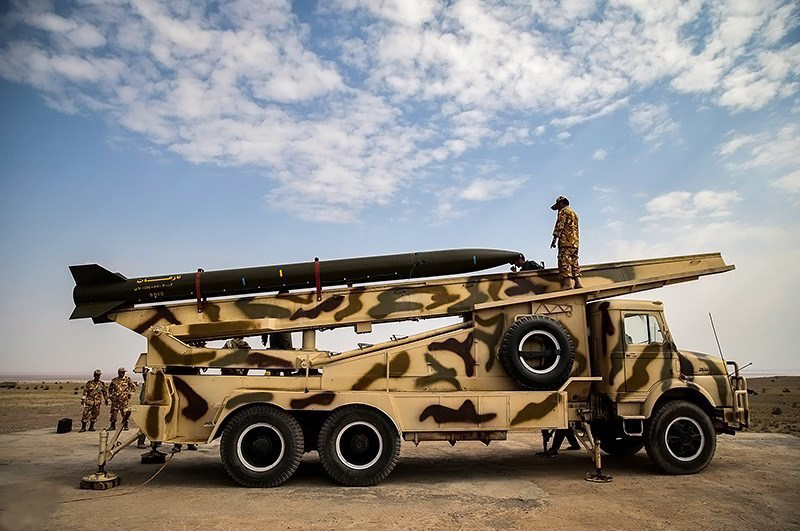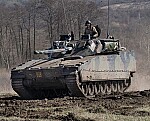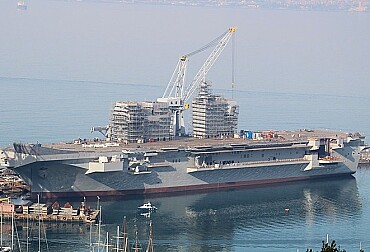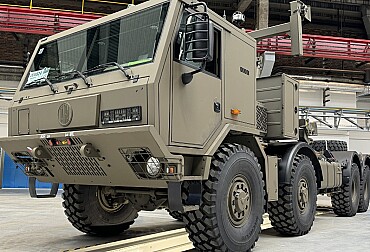Iranian military capabilites in the context of the current crisis
What military strength does Iran have at its disposal in the event of open war with the Jewish state and its allies? It is clear that Iran's armed capabilities have been considerably strengthened over the last thirty years. According to the World Bank, military spending jumped from $15.8 billion to $24.6 billion in 2021, representing 2.3% of GDP. The country thus overtakes Israel which spends $24.3 billion in the list of countries with the highest military spending. The Shiite regime has one of the best air defense systems on its territory, thanks to its Rezonans over-the-horizon radar and Avtobaza passive systems, among others.

Iran is ranked 14th in the Global Firepower (GFP) world military power rankings for 2024
As far as the armed forces are concerned, Iran has two parallel groups: the regular state army or "Artesh", and the Revolutionary Guards, known as "Pasdarans". Inherited from the imperial regime before 1979, the year of the Iranian revolution, the Artesh is responsible for protecting the country's territorial integrity against external and internal threats, as a deterrent. According to a 2015 Senate report updated in April 2023, it has 350,000 men divided unevenly into four branches: the army, the navy, the air force and the special forces.
The Pasdaran group is estimated to have 300,000 men in land, air, and naval units. It is a paramilitary organization responsible for guaranteeing the regime's survival, and depends directly on the Supreme Leader, Ali Khamenei. Within this Praetorian Guard, an international division called "Al Quds"—which translates as "the holy one" in Arabic, i.e., Jerusalem—has been created to organize and carry out external operations. Considered by the authorities to be more reliable than the regular army, because they are loyal to the revolutionary ideology, the Revolutionary Guards receive most of the military budget and the most modern weapons.
While the President of the Republic has some constitutional powers, such as appointing the members of the National Security Council, the entire Iranian security apparatus is in practice placed under the authority of the Supreme Leader. As commander-in-chief of the armed forces, the Supreme Leader controls the National Security Council, appoints chiefs of staff and Pasdaran chiefs of staff, and has the final say in matters of security, defense and foreign affairs.
Before the revolution, Iran's military industry relied on arms imports from North Korea from the 1980s, but above all from the Soviet Union and from Russia: more than 70% of Tehran's arms imports came from Moscow between 1995 and 2005. With the series of Western sanctions against it, mainly since 2006 with the resumption of Iranian uranium enrichment activities, Iran has developed a defensive strategy based on deterrence and the establishment of proxies (networks of armed groups: Al Quds, Hezbollah, Badr, etc.) to support its foreign policy.
The country is developing a national arms industry that is expanding considerably under the command of the Revolutionary Guards Corps, with the production of missiles, drones, tanks, air defense systems, armored vehicles, etc., according to the International Institute for Strategic Studies.
Iran has around twenty types of ballistic missiles, as well as cruise missiles
In fact, Iran has the largest number of ballistic missiles in the region, since they are seen as an important deterrent. Iran's missile program is largely based on North Korean, Russian, and Chinese models. These include the "Sejil" missile, which has a range of 2,500 km (1,553 mi), the "Khorramshahr" missile, which has a range of 2,000 km (1,242 mi), and the "Haj Qasim" missile, which has a range of 1,400 km (870 mi) and is named after Al-Quds Force commander Qassem Soleimani, who was killed in a US drone strike in Baghdad four years ago.
In addition, Iran has the first hypersonic ballistic missile of its own production, supposedly capable of speeds at least five times the speed of sound and with complex trajectories, making it difficult to intercept. Iran's short- and medium-range missiles include the Shahab-1 missile, with an estimated range of around 300 km (186 mi), the Zulfiqar missile with 700 km (435 mi), the Shahab-3 missile (800 to 1,000 km/497 to 621 mi), and the Emad-1 missile, currently under development, with a range of up to 2,000 km (1,242 mi). Iran also has cruise missiles such as the KH-55, capable of carrying nuclear warheads with a range of 3,000 km (1,864 mi), and modern anti-ship missiles with a range of 300 km (186 mi) and capable of carrying a warhead weighing one ton.
In February, Iran unveiled its Arman missile defense system and Azarakhsh low-altitude air defense shield to boost its air defense capability. The Arman system can engage 6 targets simultaneously from a range of 120 to 180 km, while the Azarakhsh system can identify and destroy targets from a range of up to 50 km.
Iran is also a major producer of drones, as can be seen in the Ukrainian conflict where the Russian forces use the Iranian-made UAVs and loitering ammunitions.The attack drones available to the Iranian army are capable of targeting locations far from Iran's borders. In recent years, Tehran has built up a large stockpile of drones, with ranges between 2,000 and 2,500 km (1,242 and 1,553 mi) and capable of flying at low altitude to avoid radar. Among the drones unveiled in August 2023 is the "Mohajer-10," which has a range of up to 2,000 km (1,242 mi), can fly for up to 24 hours, and carry up to 300 kilograms (661 lbs).
Iranian nuclear program is assessed as representing a serious danger
The International Atomic Energy Agency has stated that there has been a significant increase in Iranian stocks of enriched uranium, rising to 23 times the limit stipulated in the 2015 agreement between Tehran and world powers. A U.S. report published last February by the Institute for Science and International Security warned of the Iranian nuclear threat and confirmed that Iran has the capacity to manufacture 6 nuclear bombs in one month and 12 bombs in 5 months. This has led the Institute to raise its Iran threat index from 151 to 180 on its scale, compared with 140 in May 2023. These risks have been assessed as representing a serious danger.
By 2012, the country claimed to have achieved self-sufficiency in the production of military equipment. Despite sanctions banning its arms exports, Iran has sold weapons to several countries, including Syria, Sudan, North Korea, and Russia. However, aviation is its weak point, as the Iranians have concentrated their war effort on air defense and the development of armed drones. With only 65 combat aircraft, some of which date from before 1979, the air force would not be able to sustain a conflict.
In the 1970s, the Iranian Air Force was clearly the most powerful force of its kind in the Middle East, rivaling the Israeli Air Force. Expensively equipped with all the most modern aircraft models of the time, it subsequently suffered from the severing of ties with the West and then the war with Iraq. Bled dry by the conflict, economic crises and competition from Revolutionary Guard formations, it is now a shadow of its former self. Most of its aircraft (the most recent having been supplied by the USSR in the early 1990s and by Iraqi aircraft defecting at the time of the Gulf War) are rarely flown, due to a lack of spare parts. A small local industry exists, capable of basic maintenance and developing copied versions of weapons, but efforts to produce Iranian aircraft locally have largely failed, with the exception of drones.
Just like during the April crisis, Iran is certainly in a position to cause harm to Israel, but the Islamic Republic also understands that the Jewish state would not be alone in leading its counter-offensive. There would certainly be allied support, which, depending on how events unfold, would probably go beyond American aid. The situation in the Red Sea and the situation in the Persian Gulf are at the heart of the concerns not only of the Americans and the British, but also of the Europeans, since missions and operations have been defined, not to mention the Arab states, either declaring neutrality—which is also a very important stance—or openly stating they will not allow any foreign (Iranian) assets to pass through their airspace.








